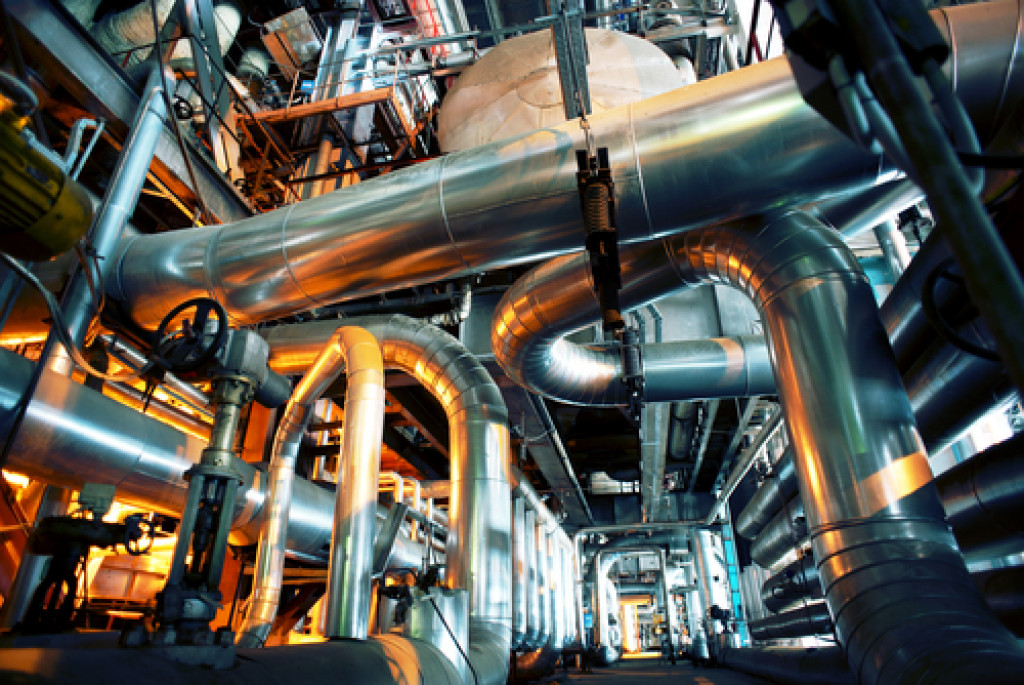- Develop a comprehensive safety program to outline clear guidelines, policies and procedures.
- Maintain a clean and organized workplace to prevent slips, trips, and falls.
- Regularly inspect equipment and create a preventive maintenance schedule.
- Implement strict safety protocols for handling hazardous materials.
- Foster an environment of safety by empowering employees to prioritize safety, holding regular meetings, and creating incentives.
Workplace safety should be a top priority for a business owner operating in an industrial facility. A safe work environment protects employees from accidents and injuries, promotes productivity, and reduces downtime. This guide will discuss five essential tips for workplace safety in industrial facilities. By implementing these strategies, you can create a safety culture, reduce risks, and prioritize the well-being of your employees.
1. Develop a Comprehensive Safety Program
To establish a safe working environment, developing a comprehensive safety program that covers all aspects of your industrial facility is crucial. This program should include clear guidelines, policies, and procedures that address potential hazards and outline safe practices. Conduct regular safety training sessions to educate employees on proper equipment operation, handling hazardous materials, and emergency protocols. Ensure all employees are familiar with safety protocols and have access to safety equipment, such as personal protective gear, fire extinguishers, and first aid kits. Regularly review and update the safety program to align with industry best practices and new regulations.
2. Maintain a Clean and Organized Workplace

A clean and organized workplace is visually appealing and contributes to a safer work environment. Encourage good housekeeping practices among your employees to prevent slips, trips, and falls. Implement a regular cleaning and maintenance schedule to keep work areas, walkways, and equipment free from debris and obstructions. Properly store tools, equipment, and materials in designated areas to prevent accidents and facilitate easy access. Inspect and repair damaged flooring, stairs, and handrails to eliminate potential hazards. Maintaining a clean and organized workplace creates a safer environment and reduces the risk of accidents.
3. Regular Equipment Inspection and Maintenance
Industrial facilities rely heavily on machinery and equipment, and their proper functioning is crucial for workplace safety. Regularly inspect all equipment to identify any signs of wear, damage, or malfunction. Create a preventive maintenance schedule to ensure equipment is serviced and repaired.
Pay special attention to critical components such as your air compressor and air filter systems, as they play a vital role in maintaining air quality and preventing respiratory issues. Regularly check that your air compressor is functioning efficiently and that the air filter systems are clean and working properly. Investing in a reliable industrial air compressor filter can help guarantee your workers’ health and safety. An industrial compressor filter can also help prevent the buildup of dust and debris that can lead to equipment malfunction.
4. Implement Safety Protocols for Hazardous Materials
Many industrial facilities deal with hazardous materials that pose potential risks to employee health and safety. Implementing strict safety protocols for handling, storing, and disposing of hazardous substances is crucial. Provide proper training to employees on identifying, handling, and storing hazardous materials safely. Clearly label containers, storage areas, and pipelines to ensure proper identification. Implement safety measures such as ventilation, personal protective equipment, and spill containment systems to minimize exposure and prevent accidents. Regularly review and update safety protocols to align with regulatory requirements and industry best practices.
5. Foster a Culture of Safety and Open Communication

Creating a safety culture is essential for maintaining workplace safety in industrial facilities. By fostering a safety culture, you empower employees to prioritize their own safety and the safety of their colleagues.
Here are tips for fostering a culture of safety and open communication:
Empower Employees to Make Safety a Priority
Encourage employees to take responsibility for their own safety and the safety of those around them. Provide formal training on safety measures such as using tools and equipment safely, working in hazardous areas, properly handling chemicals, etc. Create an environment where employees feel comfortable speaking up about any safety concerns.
Hold Regular Safety Meetings
Schedule regular meetings with management and employees to address any safety issues or concerns that have arisen since the last meeting. Discuss new procedures or changes to existing ones that all personnel should follow in the facility. Invite guest speakers to discuss safe work practices, emergency response protocols, etc., so everyone knows the safety protocols in place.
Reward Employees Who Demonstrate a Commitment to Safety
Create incentives for employees who demonstrate a commitment to safety. Recognize individuals or teams for going above and beyond when following safety procedures and protocols. Offer rewards such as gift cards, special recognition at company events, etc., to show your appreciation for their efforts.
Utilize Anonymous Reporting Systems
Establish an anonymous reporting system that allows employees to voice any issues or concerns without fear of retribution. Encourage them to report any near misses, potential hazards, or unsafe behaviors they observe on the job so that management can take the appropriate action immediately. Regularly review reports and provide feedback to employees.
Final Thoughts
Workplace safety should be a top priority for industrial facility owners. By developing a comprehensive safety program, maintaining a clean and organized workplace, conducting regular equipment inspections and maintenance, implementing safety protocols for hazardous materials, and fostering a culture of safety and open communication, you can ensure a safe working environment for your employees.




